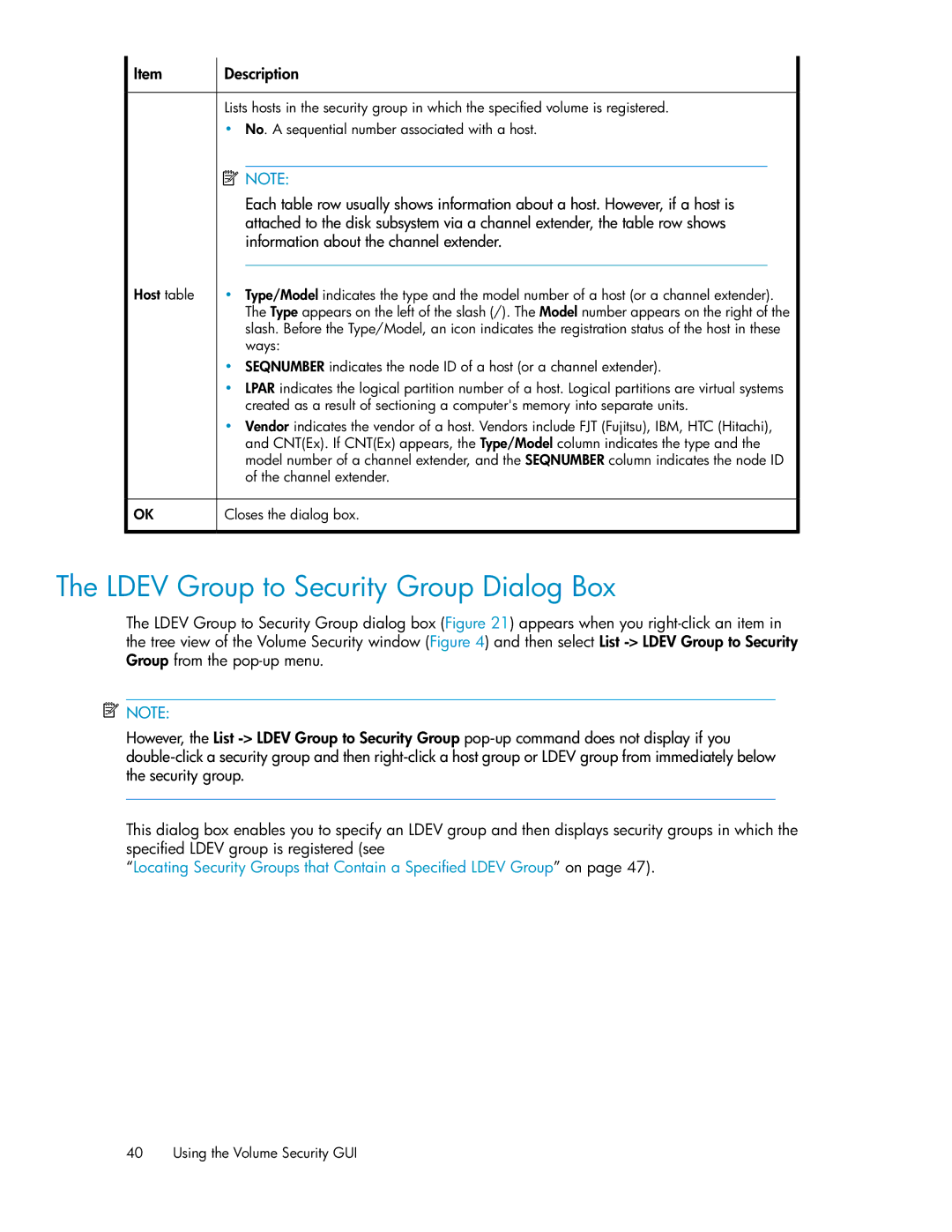
Item | Description | ||
| Lists hosts in the security group in which the specified volume is registered. | ||
| • No. A sequential number associated with a host. | ||
|
|
|
|
|
| NOTE: | |
|
| Each table row usually shows information about a host. However, if a host is | |
|
| attached to the disk subsystem via a channel extender, the table row shows | |
|
| information about the channel extender. | |
Host table |
|
|
|
• Type/Model indicates the type and the model number of a host (or a channel extender). | |||
|
| The Type appears on the left of the slash (/). The Model number appears on the right of the | |
|
| slash. Before the Type/Model, an icon indicates the registration status of the host in these | |
|
| ways: | |
| • SEQNUMBER indicates the node ID of a host (or a channel extender). | ||
| • LPAR indicates the logical partition number of a host. Logical partitions are virtual systems | ||
|
| created as a result of sectioning a computer's memory into separate units. | |
| • Vendor indicates the vendor of a host. Vendors include FJT (Fujitsu), IBM, HTC (Hitachi), | ||
|
| and CNT(Ex). If CNT(Ex) appears, the Type/Model column indicates the type and the | |
|
| model number of a channel extender, and the SEQNUMBER column indicates the node ID | |
|
| of the channel extender. | |
OK | Closes the dialog box. | ||
The LDEV Group to Security Group Dialog Box
The LDEV Group to Security Group dialog box (Figure 21) appears when you
![]() NOTE:
NOTE:
However, the List
This dialog box enables you to specify an LDEV group and then displays security groups in which the specified LDEV group is registered (see
“Locating Security Groups that Contain a Specified LDEV Group” on page 47).
40 Using the Volume Security GUI
